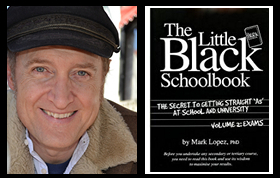Dr Mark’s The Meaning in a Nutshell
William Shakespeare, A Midsummer Night’s Dream (c. 1595−1596)
William Shakespeare’s playA Midsummer Night’s Dream (c. 1595−1596) is a comedy about the complexity of love set in an imaginary or dream setting. It celebrates love and presents the uplifting message that, despite problems, true love triumphs in the end. The play blends real characters and fairies in stories that overlap between ancient Athens and an enchanted parallel fairy world. The play features four couples (Theseus and Hippolyta, Hermia and Lysander, Helena and Demetrius, Titania and Oberon), three of which end up married by the end of the play while the fourth resolves their differences. Their attractions, estrangements, disagreements, and reconciliations are meant to convey dimensions of love that Shakespeare wished to articulate and that would resonate with the theatre audience.
Theseus and Hippolyta are revered figures in ancient Athens. Theseus is the lord of Athens and Hippolyta is the queen of the Amazons. She was originally his prize taken in war but a profound love developed between the captor and his prize. In the play, they represent an ideal, mature and sensible love that contrasts with the more intense, fickle young lovers in the play. Their plan to marry in four days sets the timeline of the play. In addition, Theseus is a well-respected man, to whom others turn for advice or to make decisions on key issues, including about permitting matrimony.
Hermia and Lysander are two of these intense yet fickle young lovers. Hermia is the daughter of Egeus, a stern father who insists that she marry someone else, Demetrius, whom she does not love. Hermia and Lysander plan to run away together to be married outside of her father’s authority and outside of the jurisdiction of Athens that could see her forced to marry according to her father’s wishes on penalty of death or be sent to live in a nunnery. To make matters worse, due to a magic spell, Lysander wakes up in love with another woman, Helena. The dramatic complications experienced by Hermia and Lysander convey the intensity, complexity and crazy fickleness of young love. These complications also convey the on-again off-again entanglements and disentanglements that can happen within a peer group of young people. Fortunately, the obstacles keeping Hermia and Lysander apart are eventually overcome and they marry happily. True love triumphs over arranged marriage.
Helena and Demetrius represent another pair of impetuous young lovers. Demetrius was in love with Helena, but he seems to have fallen out of love with her. Meanwhile, Egeus wants Demetrius to marry his daughter Hermia. Demetrius is therefore cast as the rival to Lysander for the hand of Hermia and as the unwanted partner in a marriage to be arranged by a stern father, Egeus, who is out of touch with the feelings of his daughter. Meanwhile, Helena remains loyal to Demetrius even though his affections have strayed. Fortunately, Helena’s patience pays dividends. Demetrius, with the help of a little magic, again falls in love with Helena so she ends up marrying the man of her choice. But this is not until after much youthful romantic foolishness is overcome. Their love took a convoluted path but true love won in the end.
Titania and Oberon are from the world of the fairies. They are the fairy queen and king. They are squabbling and this creates disharmony in the realm. This disharmony reflects Shakespeare’s view that for peace and prosperity to prevail, rulers have to be sensible, strong and in control. Only when the discord plaguing this royal couple is addressed can the natural moral order of the realm be restored. The relationship between Titania and Oberon shows that love can be rocky, and a partner can be led astray by delusion and by an intoxicating passion for another that quickly passes, as Titania is temporarily led astray to be with Nick Bottom. In addition, a bitter partner can become temporarily vengeful until this bitter partner reconnects with the better side of their nature. Eventually good sense prevails, the differences that fuelled their disagreements are resolved, and the loving couple that is meant to be together is together again. Their problems suggest that loving couples can go through difficult periods but true love will triumph in the end.
Student resources by Dr Mark Lopez
© Mark Lopez 2022 All RIGHTS RESERVED
The purpose of the concise notes of Dr Mark’s The Meaning in a Nutshell is to provide much needed help to students seeking to unlock the meaning of the texts with which they have to deal. (More elaborate notes are provided in lessons as part of my private tutoring business.)
Subject: A Midsummer Night’s Dream meaning, A Midsummer Night’s Dream themes, A Midsummer Night’s Dream analysis, A Midsummer Night’s Dream notes
